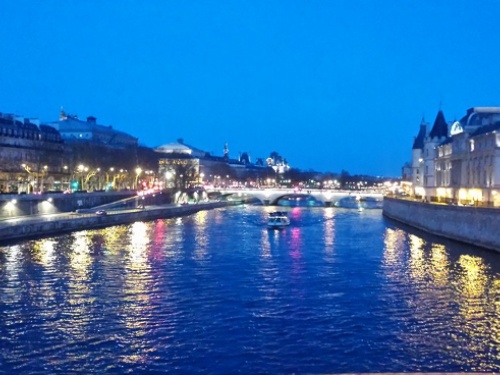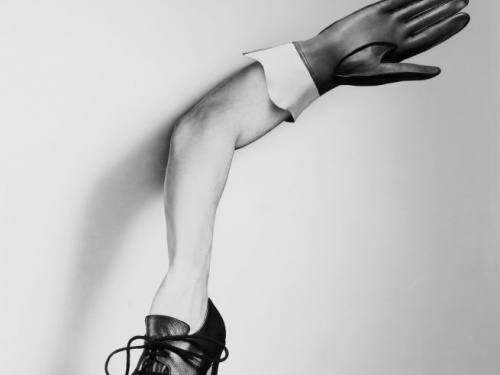London Burning: Portraits from a Creative City
Nicholas Serota by Andrea Hamilton. Copyright TransGlobe Publishing. Images courtesy of London Burning: Portraits from a Creative City. Serota on the terrace of Tate Modern's Members Room overlooking St Paul's Cathedral.
For many years, London has been one of the world's leading artistic centres. Are increasing rents and cuts to arts funding set to change this?
Edited by Hossein Amirsadeghi and Maryam Eisler, new book London Burning: Portraits of a Creative City (co-published by TransGlobe Publishing and Thames & Hudson) features new interviews and specially-commissioned photographs that introduce creative personalities young and old, set against the variegated scenes they inhabit, tracing the city’s sparking of change across architecture, theatre, dance, fashion, media, music, design and the visual and culinary arts. Ahead of the book launch and panel discussion on art and artists’ relation to urban development and change, we preview some of the book's fantastic images and extracts from the foreword by ICA Executive Director Gregor Muir.
Gemma Arterton by Robin Friend. Copyright TransGlobe Publishing. Images courtesy of London Burning: Portraits from a Creative City. Arterton on the roof of her apartment complex, peeks over at Lavender Hill, with south London's skyline stretching to the horizon
"For all its tradition - its protected areas, listed buildings, listed landscapes even - the city refuses to settle down. London cannot abide stasis."
Alan Rusbridger by Robin Friend. Copyright TransGlobe Publishing. Images courtesy of London Burning: Portraits from a Creative City. Rusbridger recalls former times on Fleet Street.
Thomas Heatherwick by Andrea Hamilton. Copyright TransGlobe Publishing. Images courtesy of London Burning: Portraits from a Creative City.
"The bookshops that once lined Charing Cross Road are close to extinction, while the musical instrument shops on Denmark Street are expected to close in 2015. It is easy to guess what will happen next."
Gregor Muir by Maryam Eisler. Copyright TransGlobe Publishing. Images courtesy of London Burning: Portraits from a Creative City.
"Overall London remains a place where the concept of constant renewal is broadly understood. Having destroyed many a thing it loves through sheer speculative greed, its affection for scattershot development has nevertheless spared the city a prehistoric 'old town' surrounded by a 'new town', a thumping bore of a pattern often encountered in other European cities. In its approach to urban sprawl, London is far less binary, opting for one large jumpble of time, rendering itself higgledy-piggledy in the process."
Matthew Freud by Robin Friend. Copyright TransGlobe Publishing. mages courtesy of London Burning: Portraits from a Creative City.
"London meanders, with streets that come and go at random, and this is what lends it a poetic edge, with every street claiming a different history."
"Walking around the city, as the individuals featured in this volume do on a daily basis, it unfolds like a book."
(Left) NTS by Andrea Hamilton. Copyright TransGlobe Publishing.
(Right) Prem Sahib by Kate Martin. Copyright TransGlobe Publishing. NTS by Robin FriendI. Copyright TransGlobe Publishing. Images courtesy of London Burning: Portraits from a Creative City.
"London needs to capture creativity by somehow making it possible for aspiring artista and othe creatives to live there; it should inspire people in such a way that the attention of the world is returned to the captial. For many years this is what it achieved, especially during the last half of the twentieth century. What seemed to attract people to the idea of London was the number of people who played with its image, plucking ideas from the urban ether."
Gilbert & George by Robin Friend. Copyright TransGlobe Publishing. Images courtesy of London Burning: Portraits from a Creative City. Gilbert & George strike their trademark pose on Brick Lane, once a site for the digging of brick-earth, now famous for its Bengali curry houses.
"Once home to waves of immigrants, from Eastern European Jews to Maltese settlers [...] Fournier street is now a mishmash of cocktail bars and startups, new trends in the face of London's oldest bagel shop and a street market that dates back to the seventeenth century. Brick Lane continues to reflect the times, its social makeup determined by events elsewhere. As Gilbert & George once noted, 'Nothing happens in the world that doesn't happen in the East End.'"
Paul Simonon by Robin Friend. Copyright TransGlobe Publishing. Images courtesy of London Burning: Portraits from a Creative City. Simonon strolls along the Regent's Canal, photographing the colourful houseboats lining the way to Paddington.
Johnny Coca by Robin Friend. Copyright TransGlobe Publishing. Images courtesy of London Burning: Portraits from a Creative City. Coca on the hunt for inspiration in Kew Gardens.
"Creatives from the '80s have a habit of referring to a time when they 'weren't doing it for the money' (making art, clothes, music etc) - a moment made possible thanks to the safety net of housing and unemployment benfits. By contrast, we cannot expect recent graduates, already saddles with student debt, to embrace enterprise and risk-taking in quite the same way."
"In answer to the question, Who can afford to live in London? the answer is: A fairly turgid mix of bankers and rich kids."
Ilse Crawford by Andrea Hamilton. Copyright TransGlobe Publishing. Images courtesy of London Burning: Portraits from a Creative City. Crawford looks out towards Execution Dock in Wapping, opened by the Admiralty in the 1400s for the execution of pirates.
"Let's [...] hope that those interested in overseeing the city's creative wellbeing might do so responsibly rather than harnessing its powers for speculative and/or political gain. If lessons have been learned in recent years about London's artistic potential and its significance in the wider world, they must surely be to acknowledge the circumstances under which creativity can flourish and then let it be." ■
On 30 September, to mark the launch of London Burning: Portraits from a Creative City (co-published by TransGlobe Publishing and Thames & Hudson), Munira Mirza (Deputy Mayor for Education and Culture, London) chairs a panel with speakers Matthew Freud (Chairman of freuds), ICA Executive Director Gregor Muir and Ole Scheeren (Architect and principal of Buro Ole Scheeren), discussing art and artists’ relation to urban development and change in London.
This article is posted in: Articles, Blog, Events
Tagged with: London Burning, Gregor Muir, Maryam Eisler, London, Artists in London, Affordability, Art, Artists

















